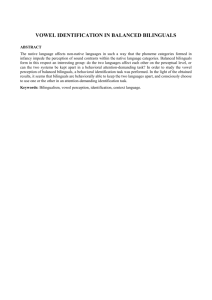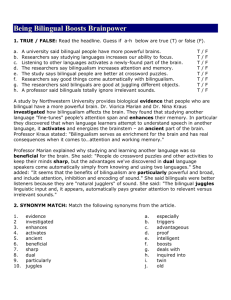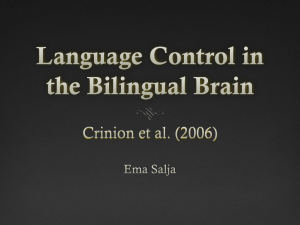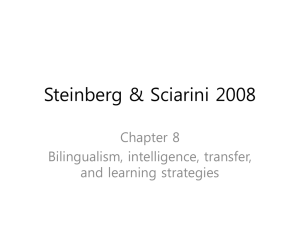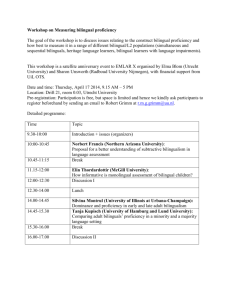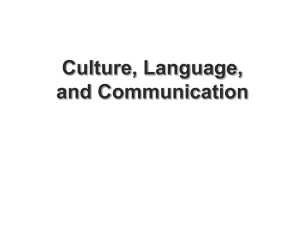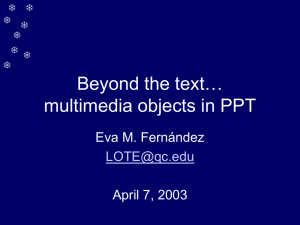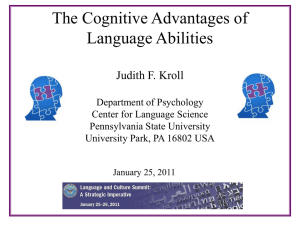LANE 424 / Chapter 2 10.04.1434 The measurement of bilingualism
advertisement
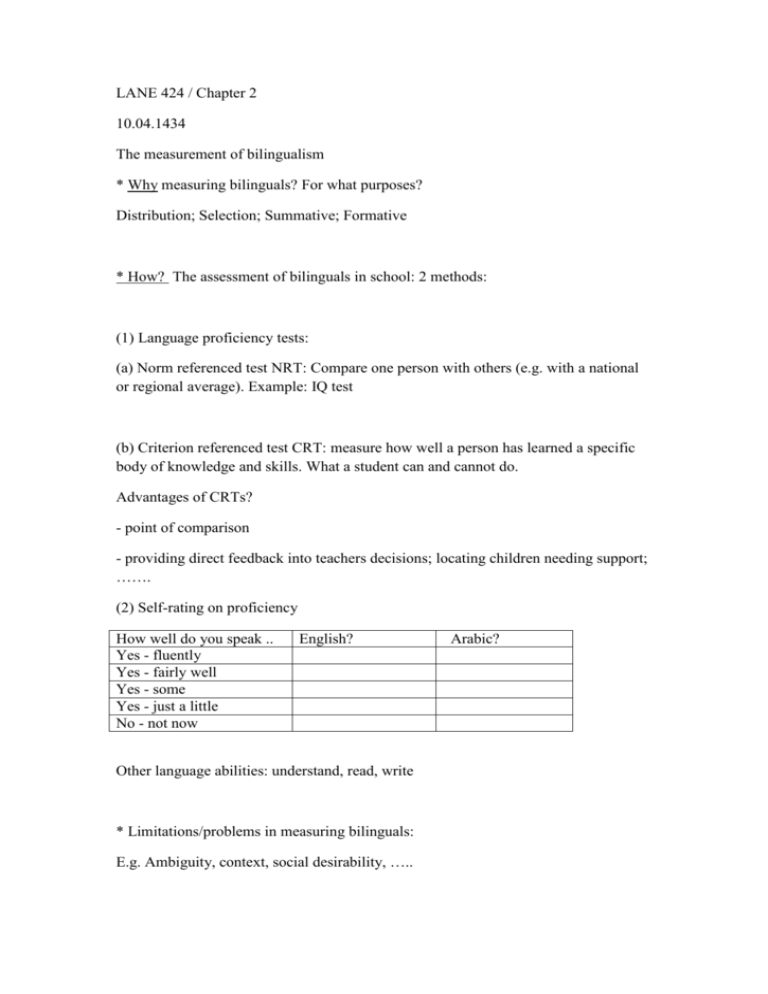
LANE 424 / Chapter 2 10.04.1434 The measurement of bilingualism * Why measuring bilinguals? For what purposes? Distribution; Selection; Summative; Formative * How? The assessment of bilinguals in school: 2 methods: (1) Language proficiency tests: (a) Norm referenced test NRT: Compare one person with others (e.g. with a national or regional average). Example: IQ test (b) Criterion referenced test CRT: measure how well a person has learned a specific body of knowledge and skills. What a student can and cannot do. Advantages of CRTs? - point of comparison - providing direct feedback into teachers decisions; locating children needing support; ……. (2) Self-rating on proficiency How well do you speak .. Yes - fluently Yes - fairly well Yes - some Yes - just a little No - not now English? Other language abilities: understand, read, write * Limitations/problems in measuring bilinguals: E.g. Ambiguity, context, social desirability, ….. Arabic? LANE 424 / Chapter 2 13.04.1434 The measurement of bilingualism ............. ............. * Communicative language testing Measuring a person's use of language in authentic situations (real communicative situations; e.g. in a shop, at home, at work; …) Testing communicative competence (e.g. IELTS; p. 29) * Measurement of bilinguals in research: Language background scales: Who speaks what language to whom and when (p. 32) * Measures of language balance and dominance (p. 34): Seeks to measure the language strength of a bilingual person. E.g. A word association task. * Language censuses: See example US census language question; Does this person speak a language other than English at home? How does this person speak English? (Very well, Well, Not well, Not at all) * Conclusion See key point in Chapter 2 (p. 40)
